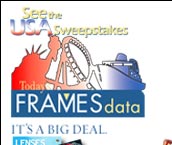
| |
Volume 6, Number 11
|
Monday, March 20, 2006
|

|
||

|
||
| Subjective Visual
Difficulties with Car Driving vs. Objective Visual Function after Cataract
Surgery Five years after cataract surgery, most active drivers have excellent visual acuity and no difficulty with daytime driving and distance estimation, but a large proportion of them experience difficulties while driving at night, according to a study by Umea University, Sweden. The prospective outcomes study examined 189 active drivers who had cataract surgery five years before the start of the study. Researchers measured visual acuity and low-contrast visual acuity (LCVA) and administered a questionnaire with driving-specific questions (VF-14 based). The results were compared with data before and after surgery. Five years after cataract surgery, only a small proportion of patients (3 percent) drove without fulfilling the visual requirements. Few patients (5 percent) reported visual difficulties while driving in daylight, but a large proportion (43 percent) experienced difficulties in darkness, with glare being the most common problem. There was a statistically significant association between an LCVA of less than 20/50 and reporting subjective visual difficulties while driving (OR, 2.6; 95 percent CI, 1.1 to 6.8). Women had 1.8 times the odds of reporting visual difficulties compared with men (95 percent CI, 1.0 to 3.5). The results suggest an adjusted association between LCVA and self-assessed visual difficulties while driving five years after cataract surgery. The authors maintain that the data confirm the importance of LCVA in relation to driving, especially in darkness. |
|
SOURCE: Monestam E, Lundqvist B. Long-time results and associations between subjective visual difficulties with car driving and objective visual function 5 years after cataract surgery. J Cataract Refract Surg 2006;32(1):50-5. |
|

|
||
| Visual Function
and Ocular Features in Children with ADHD Researchers in Sweden investigated the visual function and ocular features of children with attention deficit hyperactivity disorder (ADHD) in an effort to establish whether treatment with stimulants is reflected in functioning of the visual system. The researchers performed detailed ophthalmologic evaluations without and with stimulants in 42 children (37 boys, 5 girls) with ADHD, with a mean age of 12 years, and compared them with a reference group of 50 children (44 boys, 6 girls) without ADHD, with a mean age of 11.9 years. For a comparison between two groups, Mann-Whitney"s U-test was used for ordered and continuous variables; for dichotomous variables, Fisher"s exact test was used. For paired comparison (with and without treatment), sign test was used. In all, 83 percent of ADHD children without treatment had visual acuity of greater than 0.8 (less than 0.1 logMAR), and 90 percent with stimulant treatment had similar acuity. Heterophoria was found in 29 percent without and in 27 percent with stimulants, and subnormal stereovision (greater than 60 seconds of arc) in 26 percent without stimulants and in 27 percent with stimulants. Abnormal convergence (greater than 6 cm or absent) was noted in 24 percent without treatment and in 17 percent with treatment. Astigmatism (1.00D or more) was observed in 24 percent, and signs of visuoperceptual problems in 21 percent. Investigators found smaller optic discs (8 of 38) and neuroretinal rim areas (7 of 38), and decreased tortuosity of retinal arteries (6 of 34) than those of controls. The authors concluded that children with ADHD have a high frequency of ophthalmologic findings that are not significantly improved with stimulants. The children presented subtle morphological changes of the optic nerve and retinal vasculature, indicating an early disturbance of the development of these structures. |
|
SOURCE: Gronlund MA, Aring E, Landgren M, Hellstrom A. Visual function and ocular features in children and adolescents with attention deficit hyperactivity disorder, with and without treatment with stimulants. Eye 2006; Mar 3 [Epub ahead of print]. |
|

|
||
| Relationship
Between Optic Disk Cupping and Retinal Vein Occlusion Cup-to-disk ratio is a significant predictor of risk of incident retinal vein occlusion (RVO), according to a prospective epidemiologic study by the University of Wisconsin. In a population-based prospective study in Beaver Dam, WI, investigators determined optic disk cupping and RVO from retinal photographs of 4,926 adults aged 43 to 86 years at baseline, and administered a standardized medical examination and questionnaire to all participants. The main outcome measure was the 10-year cumulative incidence of RVO. Fifty-eight people developed incident RVO at five (31) or 10 (27) years after the baseline examination. Those sustaining RVO were older, had higher intraocular pressure (IOP) and were more likely to have definite or probable glaucoma at the baseline examination. The odds of having an incident RVO increased with increasing cup-to-disk ratio at baseline (odds ratio [OR] = 1.29/0.1 increase in cup-to-disk ratio, 95 percent confidence interval 1.07, 1.56), while controlling for age, systolic blood pressure, current smoking, diabetes status and IOP. Investigators found a similar OR after excluding those with glaucoma. Excluding those with central (as opposed to branch) vein occlusion had no significant effect on the OR. |
|
SOURCE: Klein BE, Meuer SM, Knudtson MD, Klein R. The relationship of optic disk cupping to retinal vein occlusion: the Beaver Dam Eye Study. Am J Ophthalmol 2006; Mar 7 [Epub ahead of print]. |
|
BRIEFLY
|
|
|
||||||||||||||
|
||||||||||||||
| Subscriptions: Review of Ophthalmology Online
is provided free of charge as a service of Jobson Publishing, LLC. If
you enjoy reading Review of Ophthalmology Online, please tell a
friend or colleague about it. Forward this newsletter or send this address:
[email protected].
To change your subscription, reply to this message and give us your old
address and your new address; type "Change of Address" in the
subject line. If you do not want to receive Review of Ophthalmology
Online, reply to this message and type "Unsubscribe: Review of Ophthalmology
Online" in the subject line. Advertising: For information on advertising in this e-mail newsletter or other creative advertising opportunities with Review of Ophthalmology, please contact publisher Rick Bay, or sales managers James Henne, Michele Barrett or Kimberly McCarthy. News: To submit news, send an e-mail, or FAX your news to 610.492.1049 |


















